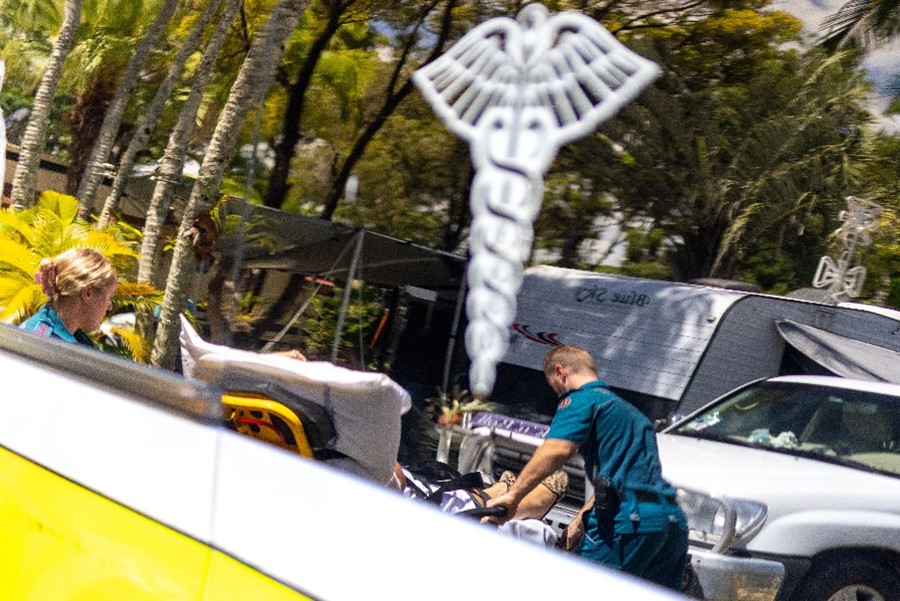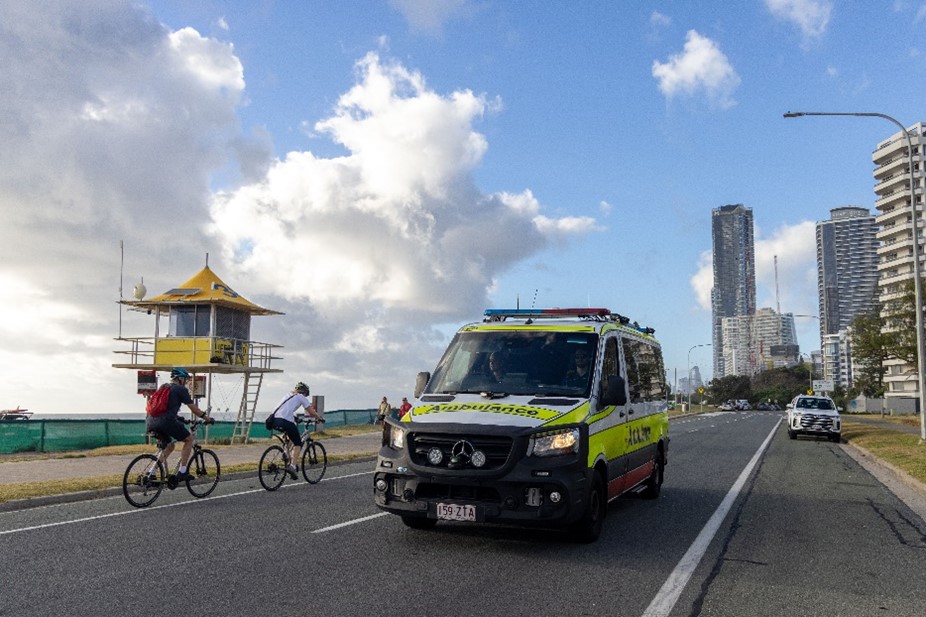
The caravan was quite new, just one in a long row of permanent sites.
On the wall next to the bed was a carved wooden sign: “Welcome to Nanny & Poppy’s, where grandkids are always spoilt”.
Noreen and her husband Bill had been living in the caravan park since Covid, their “big lap” plans curtailed by a pandemic, then finances and then circumstances.
Noreen had cancer and we’d been called to their little caravan in the back of Southport to check on her, offer her some relief and possibly transport her to hospital.
I’d come along with paramedics Jordan Hawkins and Madeline Hillis on a ride along from Southport station.
We’d met earlier that morning at the start of their shift; me keen to get as many photos and video as I could and experience a day in the life of a paramedic on the northern Gold Coast, and them; “volun-told” to have this internal comms guy along for the day.
Our first job for the day was to a man coming down from heroin.
The house backed on to a creek way and was surrounded by a high fence with security cameras dotted every 2-3 metres around the perimeter.
Jordan suggested the patient might not appreciate me going inside with my camera, so I waited by the ambulance.
On the way to the job Maddy chatted with me about her work and the types of jobs we might encounter through the day.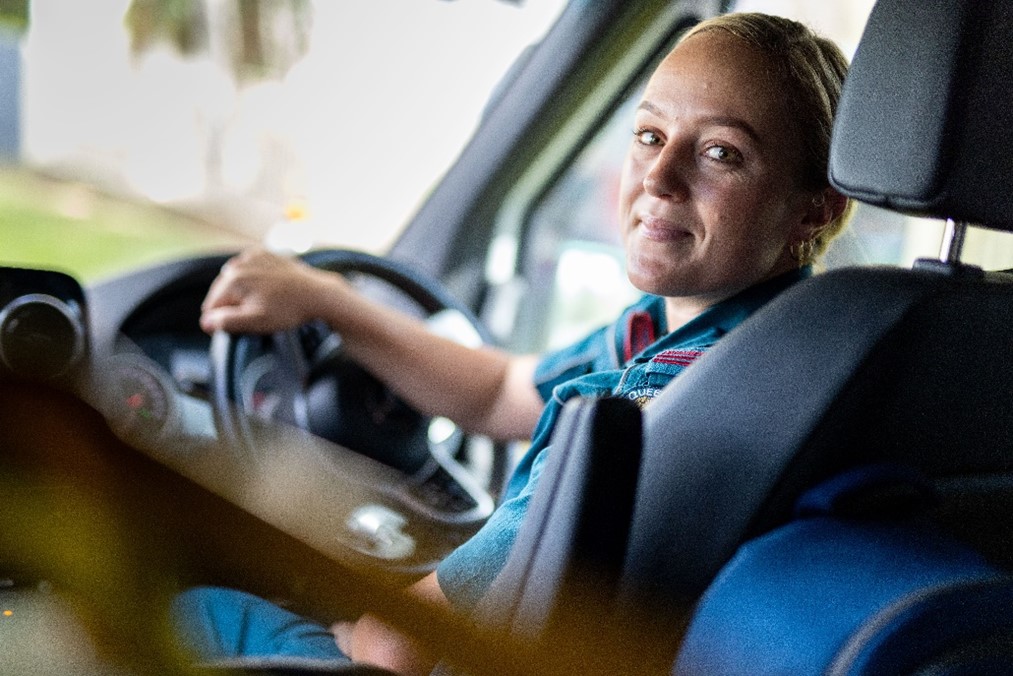
“I love working on the Gold Coast – great colleagues, great views and a good work/ life balance.” Maddy said.
“Before this I worked in Logan, which I really enjoyed too.
“There’s something new every day and we never know what we’ll get sent to.
“It’s one of the things about the job that keeps it interesting.”
Travelling at speed in the back of an ambulance is an adrenaline-filled, rattly affair, especially if you’re trying to hold a camera steady, so I was grateful for Maddy’s driving skills as she slowed down with the thumper thumping for the lady in the red Mazda to get out of the way at the lights.
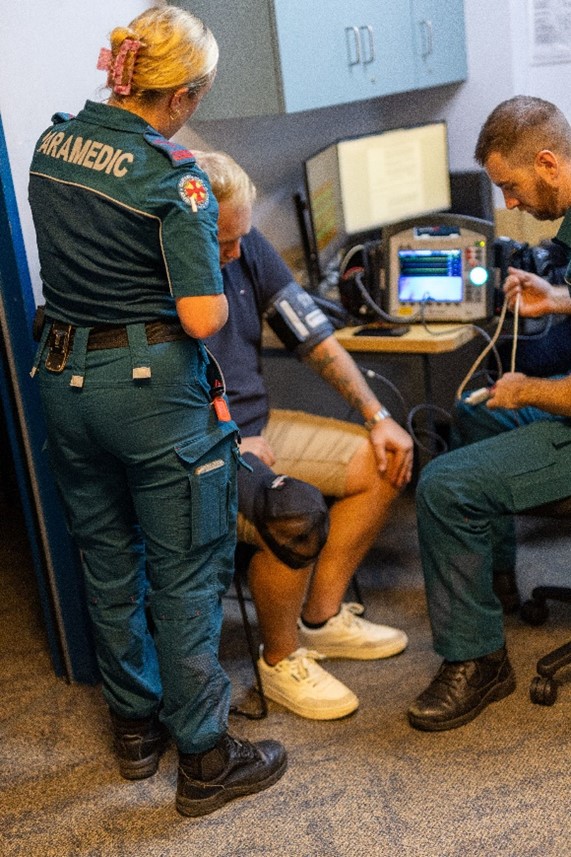 It was decided the man who was coming down from heroin didn’t need to go to hospital, so our next job was at the Southport Watchhouse.
It was decided the man who was coming down from heroin didn’t need to go to hospital, so our next job was at the Southport Watchhouse.
A man had been hit from behind in a road rage incident in a school zone and a fight had ensued.
The Queensland Police Service (QPS) officers had taken care of the aggressive driver, and the paramedics were called for Yuri, who’d been hit and kicked.
Maddy and Jordan went through their assessment, listening carefully as he explained where his pain was and what had happened.
It struck me much of paramedic work is deep listening – taking in the details of the job from the Operations Centre, discussing the patients’ details (from the Viewer) on the way to the job and listening carefully to the patient and their loved ones as they try to describe what’s going on, listening on the way to the hospital as patients divulge and divest themselves of some of their darkest fears.
If listening had a poster child, it would be the paramedic.
I’m a newbie to the world of ambulances and my understanding of the ambulance service prior to working at QAS could be described through this simple equation:
Patient in need + Ambulance = Hospital, so I’ve come into this role naïve and open, an innocent amongst experts.
Since starting with QAS last year I’ve had the privilege of telling the stories of the many nuanced initiatives the QAS is developing, including some Australian and world firsts.
I’ve also experienced a few “ride alongs”, from Mossman to Kingaroy to Brisbane and the Gold Coast; with the Falls Co Response unit, and on a bike myself riding along with the Bicycle Response Team.
I hope to do more across QLD to show the diversity of our paramedics’ experiences, communities and landscapes.
Something that’s been consistent across my interactions with QAS staff, and especially the front line paramedics and Emergency Medical Dispatchers (EMDs), is their calm compassion and their gallows sense of humour.
Perhaps it’s a by-product of having seen such extremes in their job, maybe it’s a self-protection mechanism, but it seems anything that isn’t life-threatening, isn’t to be stressed about.
A check over for Yuri at the Southport police station revealed he’d had some head trauma in the fight as well as a back injury, so Jordan and Maddy decided to transport him to hospital.
After a short wait while he was admitted, we were dispatched to Renee, a 50-something lady with complex care needs.
She was obviously in pain and had many complaints, ranging from discomfort, to angina, to problems with her carer.
While Renee told us God had brought us there to be with her, Jordan and Maddy checked her vitals, discussed her issues with her and her carer, and eventually decided she didn’t need transport to hospital.
“There’s a fair bit of psychology required in this job,” Jordan said when we returned to the truck.
“Sometimes people just need to be heard and we’re a way for them to have someone caring come and be with them.”
Our next job was on the beach at Kurrawa.
A man in his 70s had been bodysurfing and had headbutted the sand and grazed his face, but more concerningly, hurt his back.
He was still on the beach when we arrived, with a HARU team assessing him with surf lifesavers nearby.
Fortunately he was conscious, and the decision was made to transport him to the hospital.
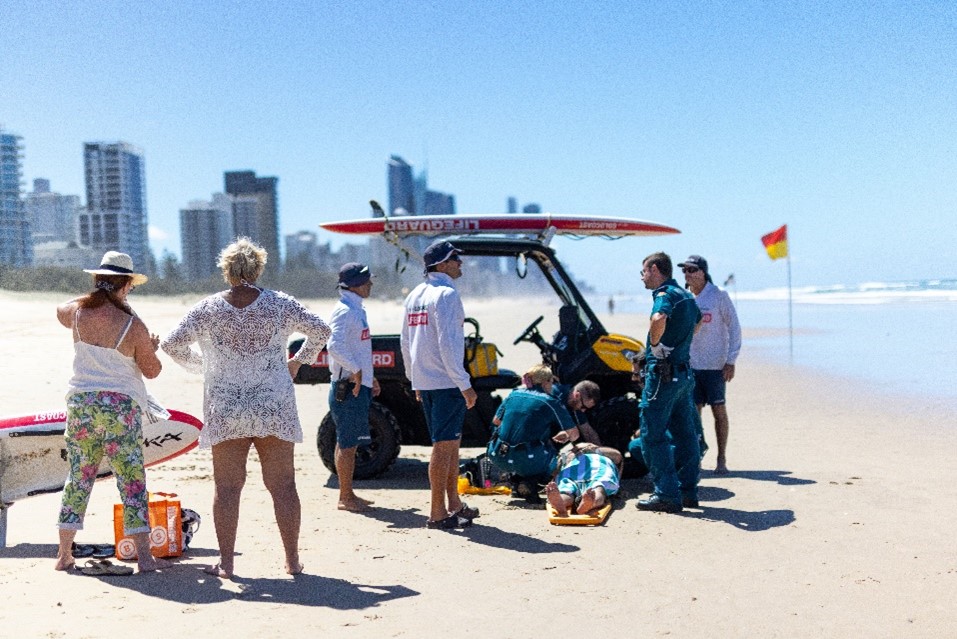
For me these were the money shots of the day, with the paramedics on the beach and the Gold Coast high rises and sand dunes (unmolested by Cyclone Alfred at this stage) as the backdrop.
Back at Noreen and Bill’s caravan, it was stuffy and airless.
Jordan talked with Noreen about her chemo, having found her PICC line had been dislodged and she might have developed a urinary tract infection (UTI).
It was decided a trip to hospital would be beneficial.
Noreen was able to walk out of the van, onto a stretcher and into the ambulance, with her neighbours wishing her well as the doors closed.
Despite Noreen’s discomfort and distress, Maddy and Jordan’s care was able to bring her some relief and a sense that she was going to be ok.
That this healing work is happening in a thousand different ways across the state, in homes, on the side of the road, in our ambulances and in hospitals’ waiting rooms, is to me a small miracle.
I’m very grateful to Maddy and Jordan for having me along for the day.
On every ride-along I learn a little more about the QAS, and continue to be impressed by the kindness, compassion, and quality of care our paramedics deliver to our communities across Queensland.
